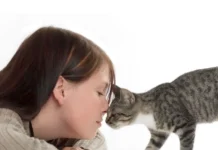Understanding Dog Apologies: Do Our Canine Friends Really Feel Guilt?
Dogs possess a remarkable ability to communicate their feelings, even without the use of words. While they may not articulate their emotions verbally, they often express remorse and regret through various body language cues and behaviors.
The Nature of Canine Communication
Despite being known as “man’s best friend,” dogs have a communication style that is fundamentally different from ours. While humans rely heavily on verbal language, dogs communicate using body movements, vocalizations, and even chemical signals. Understanding how dogs express their feelings can deepen our bond with them.
Research shows that dogs often display “guilty” behaviors more frequently when they have been scolded. Dr. Alexandra Horowitz states that these behaviors are more about responding to human cues than understanding their misdeeds. To this extent, dog apologies may not signify guilt in a human sense, but they reflect a dog’s desire to prevent confrontation and alleviate tension.
10 Signs Your Dog Is Apologizing
While dogs may not fully grasp guilt or the act of apologizing as humans do, they exhibit several behaviors that suggest they are trying to make amends. Here are ten signs your dog may be attempting to apologize:
1. Lowering Their Head and Showing Airplane Ears
When dogs lower their heads and make “airplane ears,” it can signal that they feel afraid or submissive. This behavior demonstrates acknowledgment of a misdeed and a desire to ease tension.
2. Avoiding Eye Contact
Dogs often retreat or avoid eye contact after doing something wrong. This behavior is less about guilt and more about seeking space to calm down from a negative response.
3. Tucking Their Tail and Making Puppy Eyes
When your dog tucks its tail and gives you those heart-melting “puppy dog eyes,” it can indicate fear, submission, or an expression of regret following a reprimand.
4. Lying Down and Exposing Their Belly
Exposing their belly is a sign of trust, but dogs may also do this in apology, indicating they wish to avoid confrontation.
5. Licking

After a misstep, dogs often lick themselves or their owners as a gesture of comfort, aiming to soothe both parties and reinforce their bond.
6. Sticking Close to You
Intimate gestures like nuzzling or sticking close often indicate that dogs seek reassurance and comfort after a wrongdoing.
7. Placing a Paw on You

By placing a paw on you, dogs acknowledge their mistakes and seek reassurance that their bond remains unbroken.
8. Whining
@lovimals She gave herself away 😂 #dogsoftiktok #funnydog #doglover
Whining can be a sign of submission among dogs, echoing behaviors seen in their wild ancestors when faced with reprimands.
9. Bringing Their Favorite Toy to You

Some dogs may offer their favorite toys post-mischief as a way to mend and reinforce their bond with their owners.
10. Yawning
Yawning in response to being reprimanded often signifies a desire to de-escalate a tense situation or alleviate stress.
Responding to Your Dog’s Apologies
When your dog expresses remorse, responding appropriately is crucial for building a strong relationship. Calmly acknowledging their behavior can reinforce feelings of safety and love. Avoid punitive responses, as they may increase anxiety and worsen behavior.
Conclusion
Understanding dog language is essential for fostering a lasting bond with your pet. By recognizing their unique apology behaviors, you can navigate potential conflicts more effectively and deepen your relationship with your furry friend. How does your dog apologize? Share your experiences in the comments!












